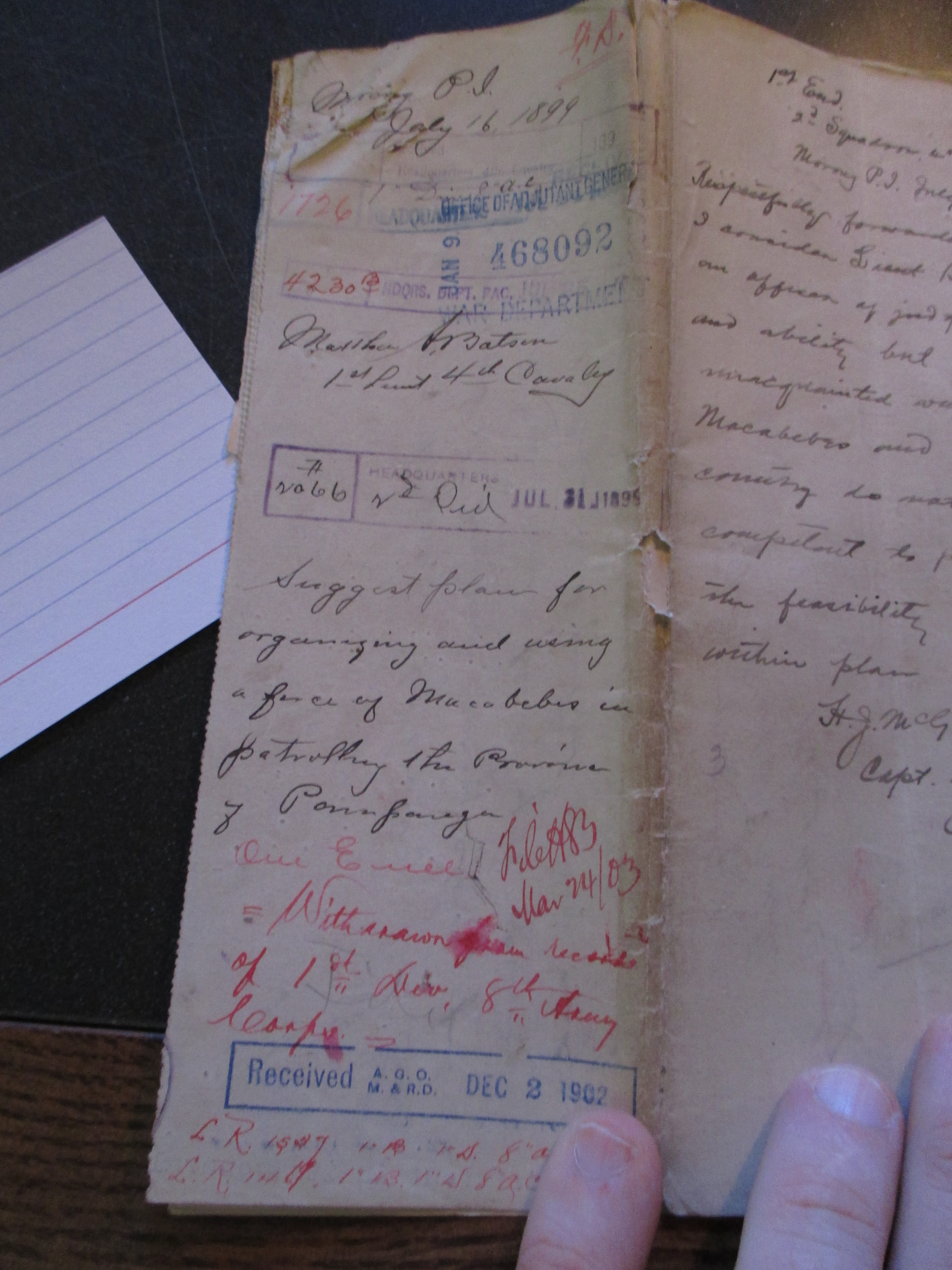Associate Professor of Political Science and International Affairs
George Washington University
Department of Political Science
21115 G. St. NW, 440 Monroe Hall
Washington, DC 20052
ericgryn [at] gwu.edu

| Home | CV | Research | Teaching | Non-State Allies |
| After the Spanish-American
War ended, the United States found itself embroiled in a costly
war against rebels in the Philippines. The war would last for
years, was controversial in the United States, and was
extraordinarily violent. To reduce the costs of the war and increase its legitimacy, the United States recruited local militias, religious groups, and other fighters to enlist in the Army. The first and most famous of these units was the Macabebe Scouts. The Macabebe Scouts were largely responsible for one of the most remarkable successes in the war: the capture of the rebel leader, Emilio Aguinaldo. The story of how the Macabebe enlisted and the barriers that Major Batson, their recruiter, had to cross is really amazing. The image on the right is a picture of those involved in the mission; below are two depictions, one from the United States, trying to convey that if Americans were abusive during the war, it is because they learned to be from the Macabebe. |
 |
x |
The primary debate about the
Macabebe is not why they fought, but why the United States chose
to ally with them. The Macabebe had served the Spanish before
the war began, and were likely anxious to serve the United
States in the same capacity. The problem was that the United
States worried that arming Macabebes would lead to disastrous
results. The United States had armed Aguinaldo's army in war
against the Spanish, and now those arms were being used in a
general insurrection against American occupation. In addition,
the army at the time was marked by extraordinary racism (for
the classic account) There is a debate about why the U.S. decided to ally with the Macabebe. The conventional wisdom is that it was authorized by Henry Lawton. America's Middlemen, by contrast, traces it to the influence of a relationship between a junior officer and his Macabebe porter, Jacinto. The document on the left is the original plan, authored by Matthew Batson, for enlisting and arming the Macabebes. As you can see from the image on the right, Otis thought it was a terrible idea. |
|
  |
The Macabebe undertook a large number of
operations in the war. The one for which they became best known was
the capture of Aguinaldo. Aguinaldo was the leader of the forces
fighting against the United States in the Philippines. Frederick Funston, a Brigadier General in the Volunteers, formulated the plan. He had the Macabebe Scouts impersonate reinforcements, headed to support Aguinaldo. With the Scouts with Funston, and a few other white officers, disguised as prisoners of war. When they entered Aguinaldo's camp, they broke disguise, capturing him. The Macabebe on the mission on pictured on the left. To read the original report of the naval operation in support of the missions, see Page 1 Page 2 Page 3 Page 4 Page 5 Page 6 Page 7 (sorry about that light). |